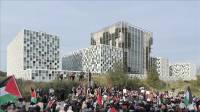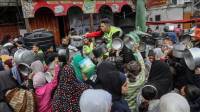

MOSCOW - Russian President Vladimir Putin on Thursday accused Ukraine of trying to attack the Kursk nuclear power station, around 50 kilometres (30 miles) from the fighting in the Russian border region. The Kremlin leader did not present any evidence for his claims or provide further details on the alleged attack. “The enemy tried to strike the nuclear power plant at night, the International Atomic Energy Agency (IAEA) has been informed,” Putin said in a televised government meeting.
There were no previous reports of an attempted strike on the facility in Russian media, which has been in focus since Ukraine launched a major cross-border offensive into the Kursk region on August 6. IAEA chief Rafael Grossi is planning to visit the Kursk nuclear plant next week, an agency spokesperson told AFP earlier on Thursday.
Kyiv and Moscow have traded accusations of threatening nuclear safety throughout the 2.5-year conflict. In the meanwhile, Russia’s army on Thursday claimed it had captured another village in Ukraine’s eastern Donetsk region, the latest in a string of territorial advances for Moscow’s troops.
The defence ministry in Moscow said its forces had captured the village of Mezhove, located between Avdiivka, captured in February, and the logistics hub of Pokrovsk, toward which Russian troops are advancing. Moscow has pushed on with its offensive in the Donetsk region even as it tries to fight off a Ukrainian counter-assault into its own Kursk border region.
Facing manpower and ammunition shortages for much of 2024, Ukraine has been pushed onto the back foot in the industrial eastern region following months of stalemate.
Russia’s defence ministry has claimed to capture new settlements in the area on an almost daily basis in recent weeks. They include towns such as New York, which have been the focus of heavy fighting and artillery raids for months, as well as tiny villages, consisting of little more than a single street and a handful of abandoned buildings.
Ukraine is evacuating civilians from the city of Pokrovsk and its surrounding areas, about 10 kilometres (six miles) from the fighting, where officials say some 50,000 still live.










